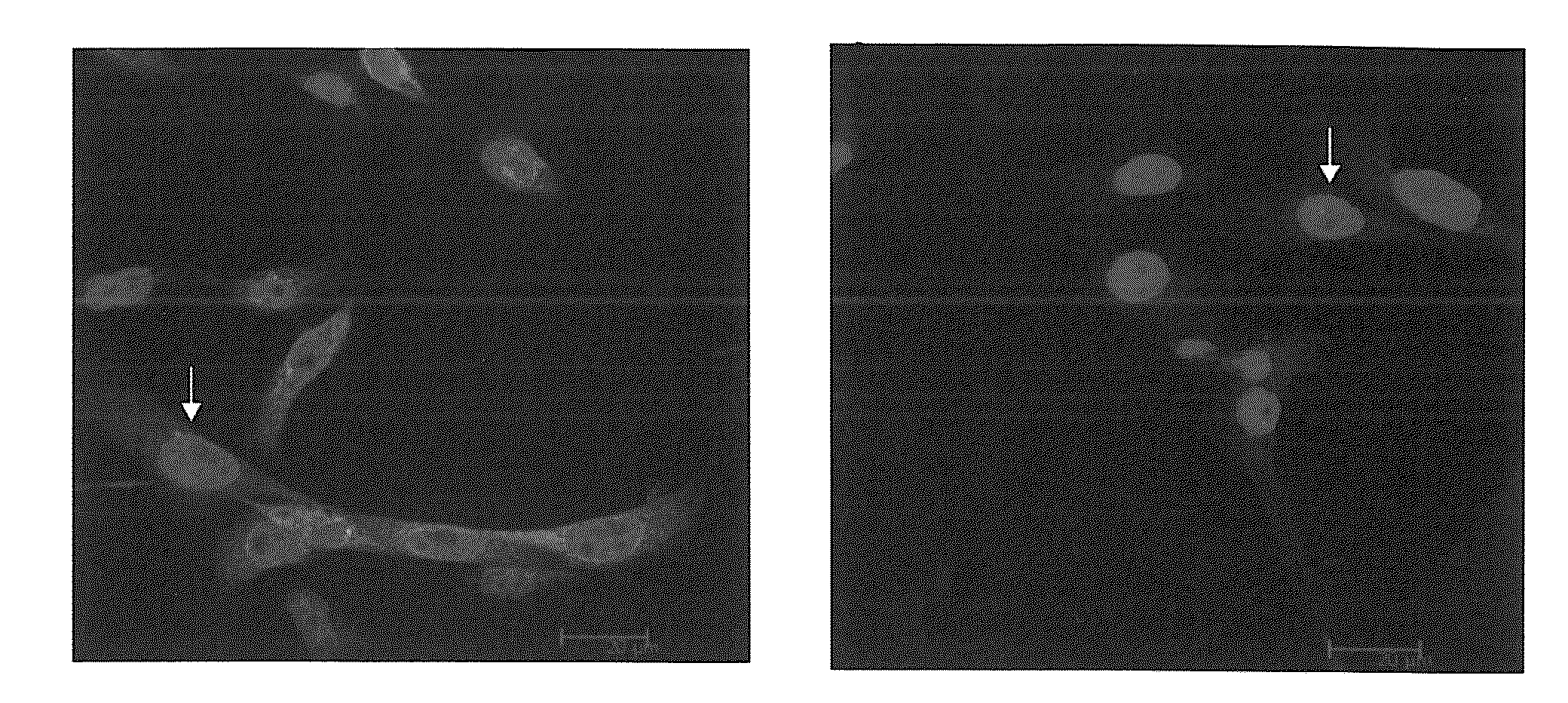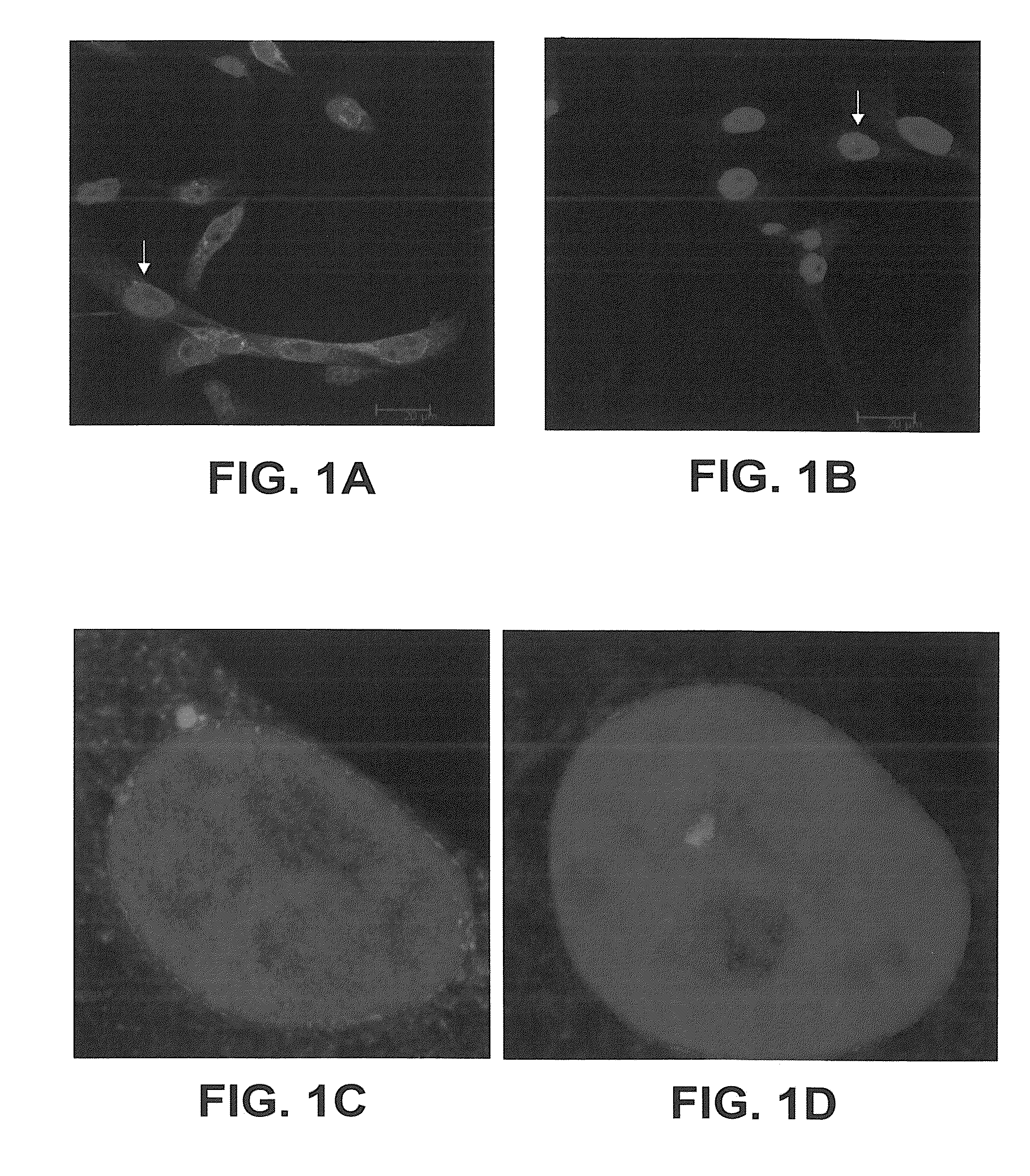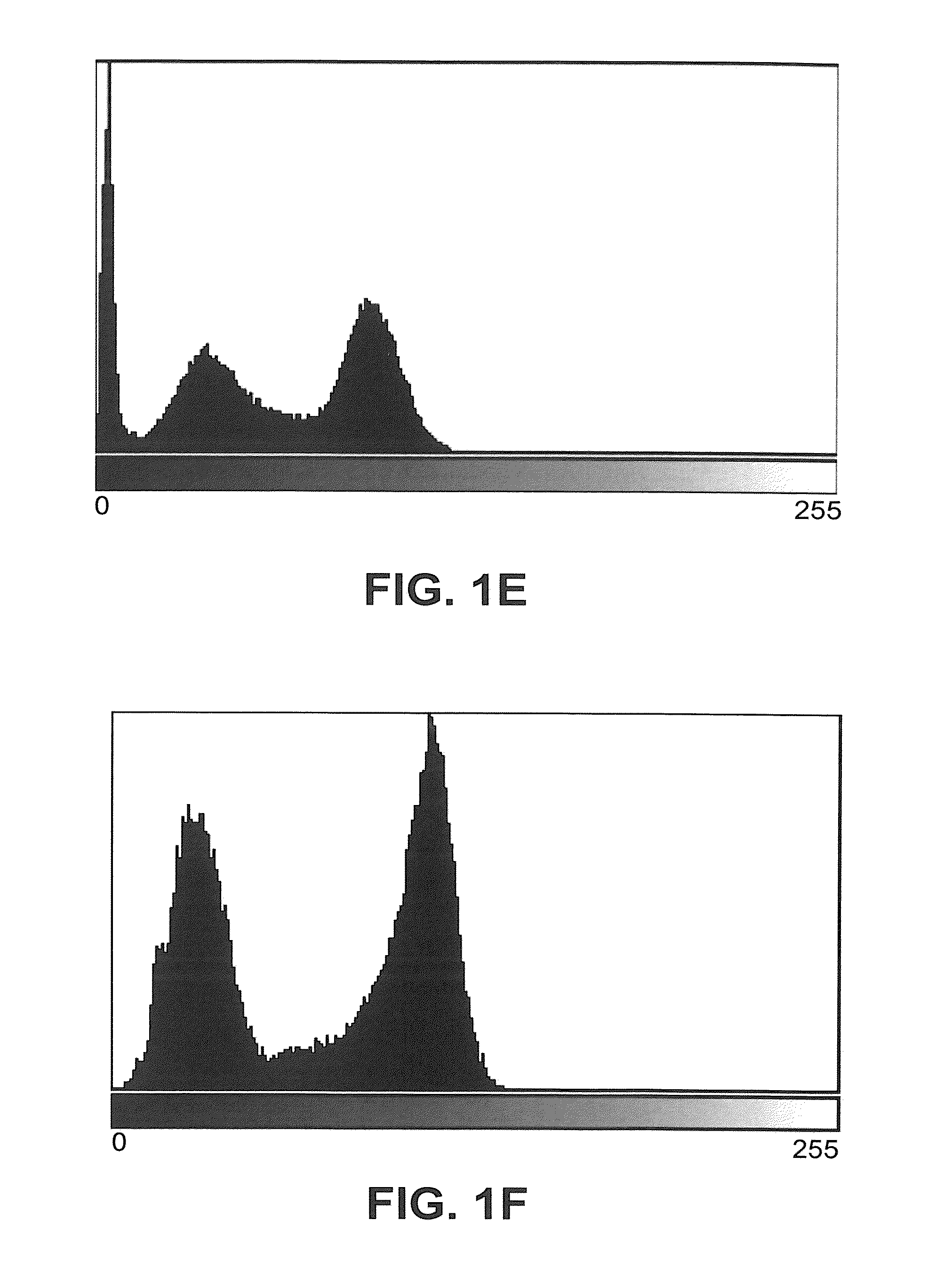Methods and apparatus for diagnosis and/or prognosis of cancer
a cancer and prognosis technology, applied in the field of detection, diagnosis and/or prognosis of cancers, can solve the problems of high variability in the prognosis of stage i lung cancer, and clinical techniques that cannot distinguish stage i patients into long-term survivors and short-term survival groups, so as to achieve detection, diagnosis and/or prognosis.
- Summary
- Abstract
- Description
- Claims
- Application Information
AI Technical Summary
Benefits of technology
Problems solved by technology
Method used
Image
Examples
example 1
Quantificational and Statistical Analysis of the Differences in Centrosomal Features of Untreated Lung Cancer Cells and Normal Cells
[0052]Image acquisition. Images useable with the subject invention can be acquired using various techniques and equipment. In one embodiment, centrosomal images were acquired in the Analytic Microscopy Core at the H. Lee Moffitt Cancer Center. A549 lung cancer cells and BEAS 2B normal bronchial epithelial cells were grown in RPMI with 10% FBS and BEGM supplemented with BEGM bullet kit, respectively. Cells were plated and grown on coverslips in a 6-well plate at 37° C. with 5% CO2. Cells were fixed using 4% Paraformaldehyde solution for 30 min at 4° C. and permeabilized using 0.5% Triton X solution. Following blocking with 2% BSA, cells were stained with γ-Tubulin antibody (Sigma). Cells were then incubated with AlexaFluor 594 secondary antibody and mounted using ProLong Antifade with DAPI (Invitrogen). A DMI6000 inverted Leica TCS AOBS SP5 tandem-scanni...
example 2
Discriminant and Prognosis of Stage I Long-Term and Short-Term Survival Lung Cancer Patients through Quantitative Analysis of Centrosomal Features
[0110]Tissue processing and immunohistochemisty
[0111]35 cases of lung tissue with different forms and stage of cancer were provided from H. Lee Moffitt Cancer Center & Research Institute. Samples were processed within the Moffitt Microarray Core. Tissues were fixed in formaldehyde, and then embedded in paraffin. For immunohistochemistry, sections were deparafinized using xylene and ethanol washes followed by antigen retrieval buffer (Dako). According to protocol, sections were washed in PBS then blocked (10% normal goat serum, 3% BSA and 0.5% gelatin in PBS) for 1 hour at 4C. Sections were incubated overnight at 4C in primary antibody anti-gamma Tubulin, produced in rabbit (Sigma, 1:300 diluted in PBS with 2% Normal Goat Serum. Sections were washed in PBS-T, incubated with secondary antibody AlexaFlour 633 goat anti-rabbit IgG (Invitrogen,...
PUM
 Login to View More
Login to View More Abstract
Description
Claims
Application Information
 Login to View More
Login to View More - R&D
- Intellectual Property
- Life Sciences
- Materials
- Tech Scout
- Unparalleled Data Quality
- Higher Quality Content
- 60% Fewer Hallucinations
Browse by: Latest US Patents, China's latest patents, Technical Efficacy Thesaurus, Application Domain, Technology Topic, Popular Technical Reports.
© 2025 PatSnap. All rights reserved.Legal|Privacy policy|Modern Slavery Act Transparency Statement|Sitemap|About US| Contact US: help@patsnap.com



